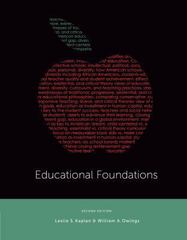Answered step by step
Verified Expert Solution
Question
1 Approved Answer
Anita Vasquez received $260,000 from her mothers estate. She placed the funds into the hands of a broker, who purchased the following securities on Anitas
Anita Vasquez received $260,000 from her mothers estate. She placed the funds into the hands of a broker, who purchased the following securities on Anitas behalf: a. Common stock was purchased at a cost of $130,000. The stock paid no dividends, but it was sold for $280,000 at the end of four years. b. Preferred stock was purchased at its par value of $20,000. The stock paid a 6% dividend (based on par value) each year for four years. At the end of four years, the stock was sold for $16,000. c. Bonds were purchased at a cost of $110,000. The bonds paid $6,600 in interest every six months. After four years, the bonds were sold for $118,200. (Note: In discounting a cash flow that occurs semiannually, the procedure is to halve the discount rate and double the number of periods. Use the same procedure in discounting the proceeds from the sale.) (Ignore income taxes.) The securities were all sold at the end of four years so that Anita would have funds available to start a new business venture. The broker stated that the investments had earned more than a 20% return, and he gave Anita the following computation to support his statement: Common stock: Gain on sale ($280,000 $130,000) $ 150,000 Preferred stock: Dividends paid (6% $20,000 4 years) 4,800 Loss on sale ($16,000 $20,000) (4,000) Bonds: Interest paid ($6,600 8 periods) 52,800 Gain on sale ($118,200 $110,000) 8,200 Net gain on all investments $ 211,800 $211,800 4 years = 20.4% $260,000 Click here to view Exhibit 11B-1 and Exhibit 11B-2, to determine the appropriate discount factor(s) using tables. Required: 1a. Using a 20% discount rate, compute the net present value of each of the three investments. (Negative amounts should be indicated by a minus sign. Round discount factor(s) to 3 decimal places, other intermediate calculations and final answers to the nearest whole dollar.) Net Present Value Common stock $ Preferred stock $ Bonds $ 1b. On which investment did Anita earn a 20% rate of return? Common stock Preferred stock Bonds None 2. Considering all three investments together, did Anita earn a 20% rate of return? Yes No 3. Anita wants to use the $414,200 proceeds ($280,000 + $16,000 + $118,200 = $414,200) from sale of the securities to open a fast-food franchise under a 10-year contract. What net annual cash inflow must the store generate for Anita to earn a 12% return over the 10-year period? Assume that the project will yield same annual cash inflow each year. Anita will not receive back her original investment at the end of the contract. (Round discount factor(s) to 3 decimal places, other intermediate calculations and final answer to the nearest whole dollar.) Annual net cash inflow $
Step by Step Solution
There are 3 Steps involved in it
Step: 1

Get Instant Access to Expert-Tailored Solutions
See step-by-step solutions with expert insights and AI powered tools for academic success
Step: 2

Step: 3

Ace Your Homework with AI
Get the answers you need in no time with our AI-driven, step-by-step assistance
Get Started


